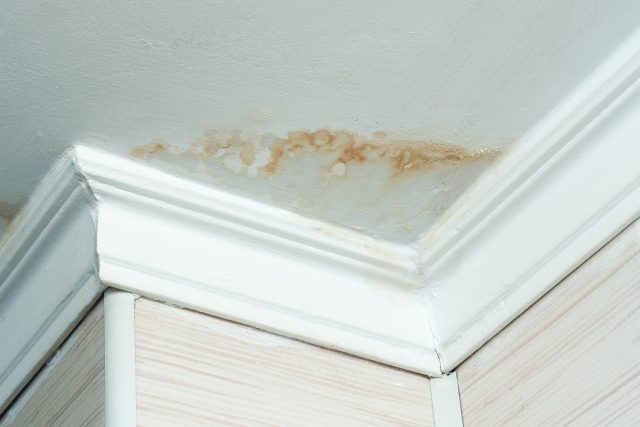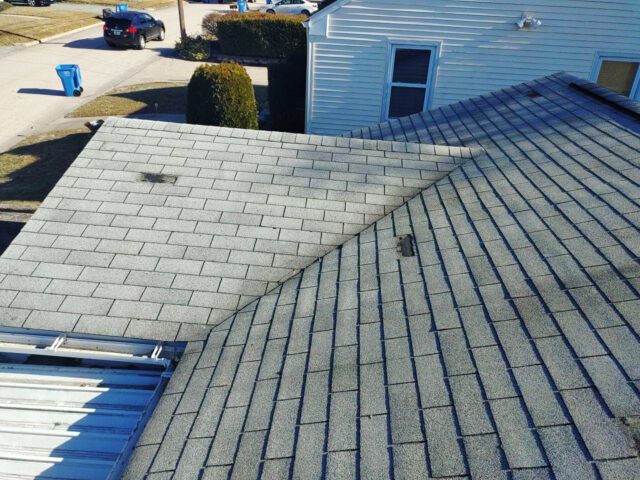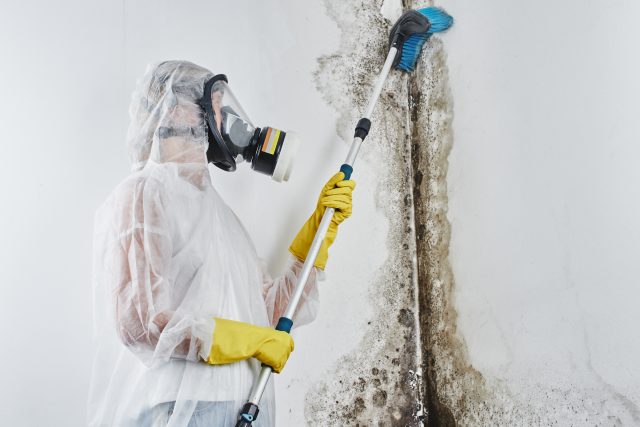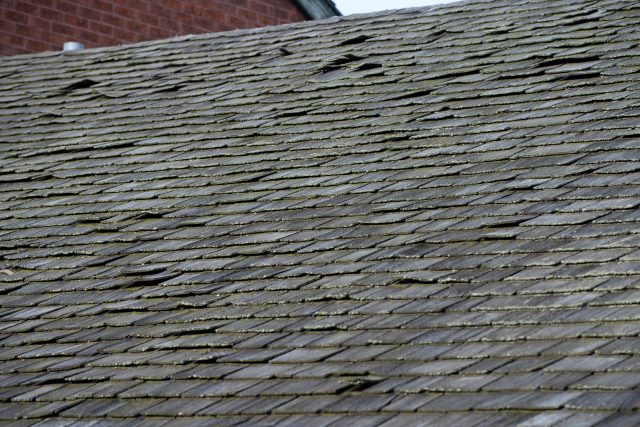At Seaberg Construction, we get a lot of calls this time of year about one thing: roof leaks. The change of seasons—cooler nights, warm afternoons, heavy rain, and piles of falling leaves—puts your roof under serious stress.
If you’ve spotted a water stain on your ceiling, noticed peeling paint, or suspect something’s not quite right up there, you’re not alone. Fall is one of the most common times for homeowners to discover leaks. And catching them early can make the difference between a simple repair and major water damage.
Let’s talk about what causes leaks during this season, how to recognize them, and what you can do to protect your home before winter arrives.
1. Why Leaks Are So Common in the Fall
Every year, we see the same pattern. Once summer storms give way to crisp, unpredictable fall weather, roof leaks tend to show up. There are a few reasons for that:
Seasonal expansion and contraction
When the sun warms your roof during the day and temperatures drop at night, materials expand and contract. That movement can loosen nails, flashing, or seals over time—creating small gaps where water can get in.
Clogged gutters and downspouts
Leaves, pine needles, and twigs pile up fast in the fall. When your gutters can’t drain properly, water pools along the edges of your roof or backs up under the shingles. This often leads to leaks along eaves and fascia boards.
Heavy rain and wind
Autumn storms can lift shingles or loosen flashing around chimneys, skylights, and vents. Even a single damaged shingle can let water penetrate the layers beneath.
Condensation and attic humidity
Warm air inside your home meets the cool roof surface, especially overnight. Without proper ventilation, condensation can build up and mimic a roof leak—from the inside out.

2. Early Warning Signs of a Roof Leak
Roof leaks aren’t always obvious. Sometimes, they show up subtly at first. As roofers, here’s what we tell homeowners to look for:
- Ceiling or wall stains: Brown or yellow spots usually mean moisture is trapped above.
- Peeling paint or bubbling drywall: Water behind walls or ceilings pushes the paint outward.
- Musty odors: A damp, earthy smell in the attic is often an early red flag.
- Visible roof damage: Curling, cracked, or missing shingles often point to trouble areas.
- Damp attic insulation: If insulation feels wet or matted, it’s likely absorbing a leak from above.
Don’t ignore the small stuff. Even a minor drip can spread, damaging insulation, drywall, and framing before you realize how serious it’s become.

3. What to Do If You Suspect a Leak
When you think you have a leak, the best thing to do is act quickly and safely.
Here’s our step-by-step advice:
Step 1: Contain the water.
Move anything you can out of harm’s way—furniture, electronics, or valuables—and place a bucket beneath the leak. If you see a bulge in the ceiling, poke a small hole to let the water drain instead of spreading.
Step 2: Check the attic (carefully).
If it’s safe to do so, take a flashlight into the attic during daylight hours. Look for dark or shiny spots, damp insulation, or mold growth. Remember, the leak might not be directly above the water stain—it often travels along rafters.
Step 3: Inspect your gutters from the ground.
Blocked gutters are a common culprit, especially after a heavy rain. Make sure they’re clear and that downspouts are draining away from the house.
Step 4: Call a professional roofer.
A proper inspection from a licensed contractor like Seaberg Construction will identify where the leak started and how extensive it is. We can determine whether a small repair or a larger fix is needed—and ensure it’s done safely and correctly.

4. The Most Common Leak Sources We Find
Every roof has weak spots, especially after years of seasonal wear. Here are the most common places we find leaks during fall inspections:
- Flashing around chimneys and skylights: Metal flashing can rust, loosen, or separate from the structure, letting rainwater slip in behind it.
- Roof valleys: These areas see a heavy flow of rainwater and are prone to leaks if shingles or underlayment have deteriorated.
- Vent pipes and boots: The rubber seals around plumbing vents can crack or pull away with age and temperature changes.
- Nail pops: When nails back out due to wood movement, even a small gap can let water in.
- Gutters and downspouts: Overflowing gutters allow water to sit at the roofline and work its way under the shingles.
- Aging shingles: As shingles lose their granules, they become brittle and less protective against moisture.
We always stress that the visible drip inside your home might be several feet away from the actual leak source on the roof. Pinpointing it correctly takes experience and proper tools.

5. How to Prevent Roof Leaks This Season
Preventing leaks is always easier (and cheaper) than fixing them later. Here’s how we help homeowners stay ahead of the weather:
✅ Schedule a professional roof inspection.
Fall is the ideal time to inspect your roof before snow and ice arrive. Our team looks for missing shingles, loose flashing, nail pops, and any other weak points that could cause winter leaks.
✅ Clean your gutters thoroughly.
Make sure water can flow freely. Consider adding gutter guards if your property has a lot of trees.
✅ Trim back overhanging branches.
Branches that touch or hover over your roof can scrape granules off shingles or drop debris that clogs gutters.
✅ Check your attic ventilation.
A balanced attic keeps moisture from building up. Clear vents and even insulation make a big difference in both leak prevention and energy efficiency.
✅ Seal vulnerable areas.
We often re-caulk or re-flash around chimneys, skylights, and vents to keep them watertight before winter.
✅ Know your roof’s age.
If your roof is 10 to 20 years old, even small leaks could be a sign that it’s time to plan for replacement. Modern roofing systems are far more weather-resistant and energy-efficient.
6. Why Waiting Until Spring Is a Bad Idea
A lot of homeowners think they can put off roof repairs until warmer weather—but unfortunately, leaks don’t wait. Once moisture finds its way inside, it can lead to:
- Mold or mildew in your attic and walls
- Rotting roof decking and framing
- Damaged insulation that drives up heating costs
- Stained ceilings, peeling paint, and cracked drywall
And once freezing temperatures set in, that moisture can expand and cause even more separation between roofing materials. Fall is your last, best opportunity to fix leaks before winter locks everything in place.

7. When It’s Time for a Roof Replacement
Sometimes, leaks are just a symptom of an aging roof that’s reached the end of its life. If you’re dealing with multiple problem areas, missing shingles, or widespread wear, a full replacement might be the smarter investment.
At Seaberg Construction, we install high-performance roofing systems from trusted brands like Owens Corning and CertainTeed. These shingles are built for New England weather—designed to handle high winds, heavy rain, and temperature swings while maintaining their curb appeal and protection for decades.
Our roofs also include proper ventilation, underlayment, and flashing systems to help prevent future leaks from ever starting.

8. Protect Your Home Before Winter Hits
Roof leaks rarely fix themselves. The longer water has to find its way in, the more damage it can cause. Fall is the perfect time to get ahead of the problem.
Here’s our simple advice to every homeowner right now:
- Clear your gutters.
- Watch for early warning signs.
- Schedule a professional roof inspection.
- Don’t delay needed repairs.
By taking these steps now, you’ll protect your investment and head into winter with confidence knowing your roof—and your home—are ready for whatever the New England weather brings.
To obtain your roof inspection report from Seaberg Construction, please complete the form available on our website: https://seabergconstruction.com/about-us-roofing-company/contact-us/

Read Seaberg Construction’s Google reviews left by homeowners like yourself: https://tinyurl.com/kkxwhx8k
Follow us on Facebook: www.facebook.com/seabergconstruction and Instagram: www.instagram.com/seabergconstruction to stay up-to-date with our current projects and news.
To obtain your complimentary estimate from Seaberg Construction, please complete the form available on our website: https://seabergconstruction.com/about-us-roofing-company/contact-us/
And, don’t forget to read our other blog posts for more home improvement tips and ideas: http://seabergconstruction.com/home-owners-information-center/

